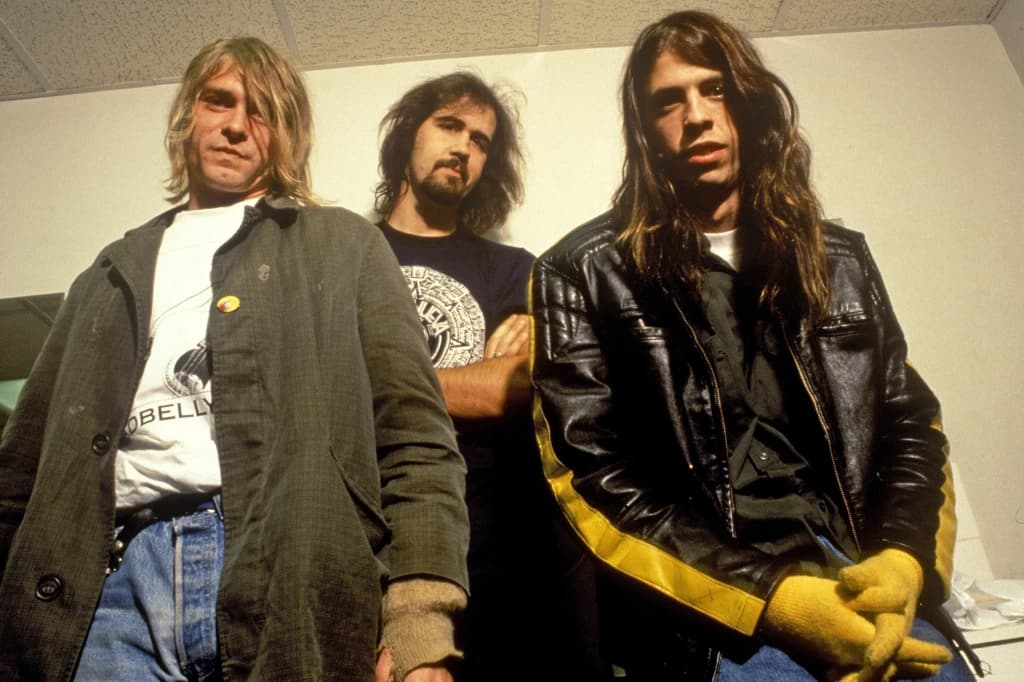
Finding Solace in the Eye of the Storm: Nirvana’s “Lithium,” a Beacon of Fragile Hope Amidst the Grunge Tempest.
It’s funny how certain songs etch themselves into the very fabric of our memories, isn’t it? They become more than just a collection of notes and words; they become time capsules, instantly transporting us back to a specific era, a particular feeling. “Lithium,” by the iconic band Nirvana, is undoubtedly one of those songs for a generation that navigated the turbulent waters of the early 1990s. Released as the third single from their groundbreaking 1991 album, “Nevermind,” it wasn’t the immediate chart-topper that “Smells Like Teen Spirit” was, but it steadily climbed the Billboard Hot 100, eventually peaking at number 64. While perhaps not a stratospheric chart conqueror, its impact resonated far beyond mere numbers, embedding itself deeply in the hearts of listeners who found solace and understanding in its raw vulnerability.
The genesis of “Lithium” actually predates the explosion of “Nevermind.” Kurt Cobain, the enigmatic frontman of Nirvana, had been toying with the song’s core ideas for several years, with early versions reportedly dating back to 1990. This gestation period perhaps contributed to its layered complexity, a feeling that it had been carefully considered and honed before finally being unleashed upon the world. The recording process itself, under the guidance of producer Butch Vig, captured the song’s dynamic shifts, from its quiet, almost melancholic verses to its explosive, cathartic choruses. This push and pull between fragility and aggression became a hallmark of Nirvana’s sound and perfectly encapsulated the emotional landscape of “Lithium.”
At its heart, “Lithium” explores the delicate balance between despair and a fragile sense of hope, often finding solace in unexpected places. Cobain himself described the song as being about a man who turns to religion as a last resort after his girlfriend’s death. However, the lyrics transcend this specific narrative, resonating with anyone who has ever felt lost and sought refuge, however unconventional. The repeated line, “I’m so happy ’cause today I’ve found my friends, they’re in my head,” can be interpreted in various ways – a genuine connection found in a community, or perhaps a descent into a more internal, even delusional, state. This ambiguity is part of the song’s enduring power, allowing listeners to project their own experiences and interpretations onto its verses.
The title itself, “Lithium,” a medication used to treat bipolar disorder, adds another layer of complexity. While not explicitly about the drug, it subtly hints at the themes of mental instability and the search for equilibrium. The song’s dynamic structure mirrors the emotional rollercoaster often associated with such conditions, moving from moments of quiet introspection to outbursts of intense energy. This unflinching portrayal of vulnerability and inner turmoil was something that deeply connected with a generation grappling with its own anxieties and uncertainties.
Beyond its lyrical content, the musicality of “Lithium” is equally compelling. The gentle, almost lullaby-like verses, carried by Cobain’s understated vocals and Krist Novoselic’s melodic bassline, create a sense of intimacy and vulnerability. Then, the song explodes into the chorus, driven by Dave Grohl’s powerful drumming and Cobain’s raw, impassioned delivery. This sudden shift in intensity mirrors the volatile emotions being explored in the lyrics, creating a truly visceral listening experience. The song’s iconic guitar riff, simple yet instantly recognizable, further cemented its place in rock history.
“Lithium” wasn’t just another grunge anthem; it was a nuanced exploration of the human condition, a testament to the fact that even in the darkest of times, a flicker of hope, however fragile, can still exist. It spoke to the alienated, the misunderstood, and the searching, offering a sense of solidarity in a world that often felt chaotic and overwhelming. Even decades later, “Lithium” remains a powerful and resonant song, a reminder of the enduring legacy of Nirvana and the singular talent of Kurt Cobain, whose voice continues to echo through the corridors of our collective memory. It’s a song that reminds us of the raw emotions we felt, the struggles we faced, and the moments of unexpected solace we found amidst the noise. And for that, it remains a timeless and deeply cherished piece of music.